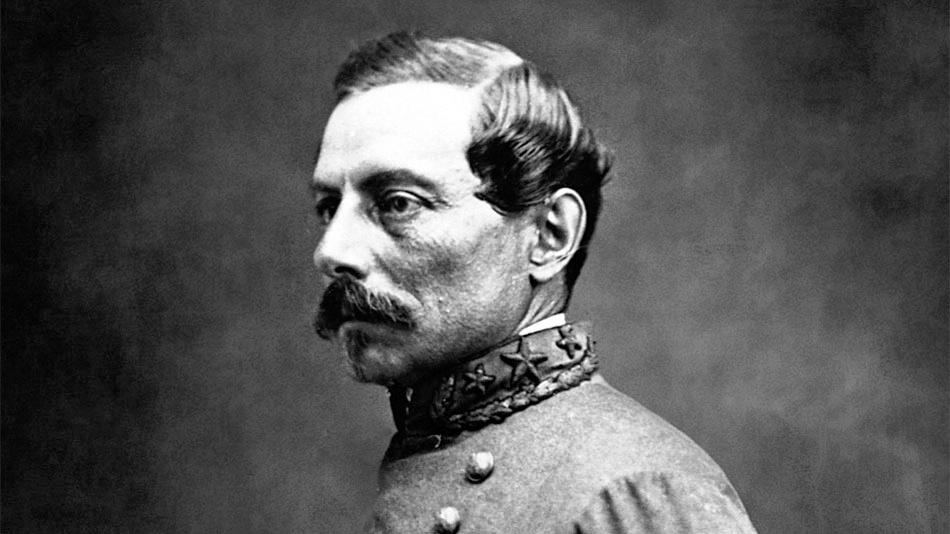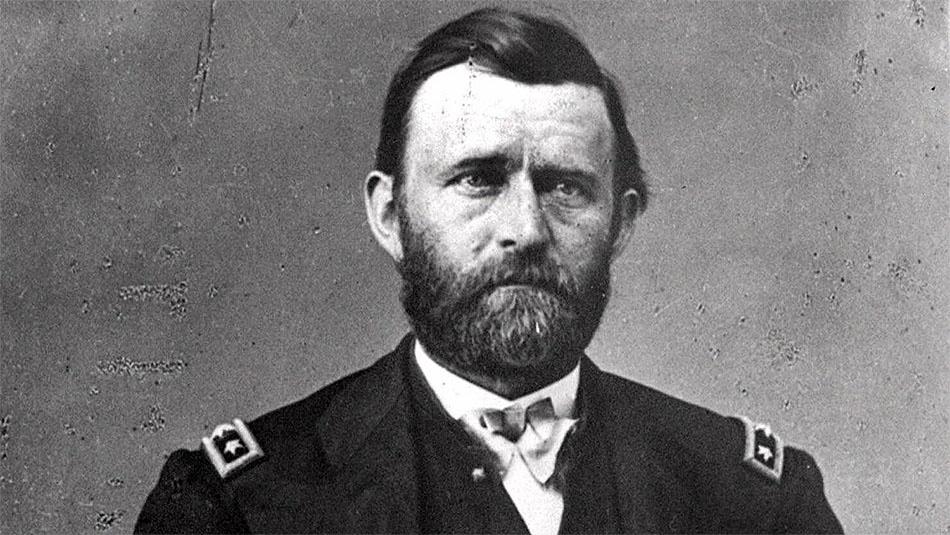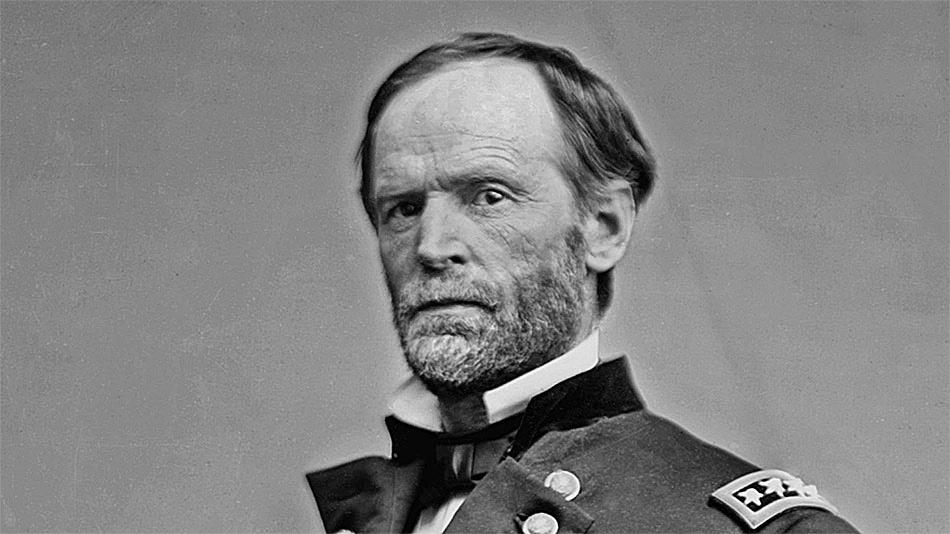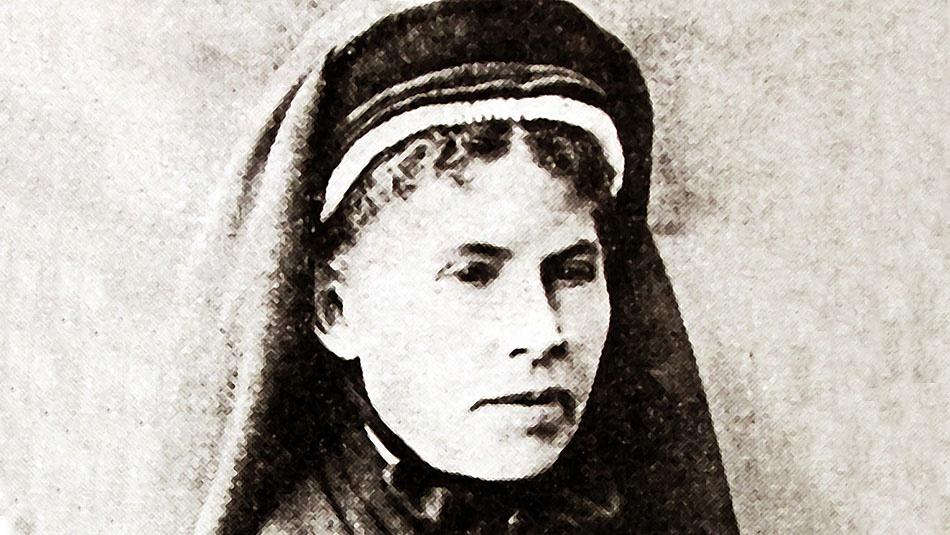Showcase
Shiloh: The Devil's Own Day
It took a two day battle with a casualty list of over 23,000 to give America a reality check on the shocking cost of its Civil War. This bloody clash near the small Shiloh church altered the war… and lives. Ann Wallace traveled hundreds of miles for a reunion with her soldier husband – only to end up sitting at his deathbed. The promising career of Confederate General Albert Sidney Johnston was cut short by a supposedly ‘minor’ wound. Union Generals Ulysses S. Grant and William Tecumseh Sherman narrowly turned defeat into a victory that set them on their pathway as military legends. Such stories told in this documentary are just a few of the thousands that were a part of a brutal battle for prized Confederate railroad crossings in nearby Corinth, Mississippi.
Watch
It took a two day battle with a casualty list of over 23,000.
Bonus Video
William Lee Golden sings "Shiloh Hill."
Major Characters
GENERAL P. G. T. BEAUREGARD

General Pierre Gustave Toutant Beauregard gained early recognition in the Confederate south when he was in charge of the South Carolina troops in Charleston Harbor where he won the victory at the Civil War’s first battle, Fort Sumter. Early in 1862, Beauregard was sent to the West as Albert Sidney Johnston's second in command. He drafted the attack orders for Shiloh and took command when Johnston was mortally wounded on the first day of the battle. On the evening of the first day he let victory slip through his fingers by calling off the attacks. Controversy over his decision has raged to this day. The next day he was driven from the field by Grant's and Buell's combined armies. He was eventually forced to evacuate Corinth, Mississippi-his supply base - in the face of overwhelming Union forces. The defeats at Shiloh and Corinth, as well as unapproved deeds, resulted in Confederate President Jefferson Davis permanently relieving Beauregard of his army and departmental commands on June 27, 1862. Beauregard was involved in other battles and defenses of southern cities later in the war, but he never regained the respect and prestige he once had.
General Ulysses S. Grant

Grant's star rose dramatically with victories at Forts Henry and Donelson in early 1862 that brought the Federals all the way to the Tennessee–Mississippi border. Shiloh, however, was a personal setback. Allowing his 49,000 troops to camp haphazardly around Pittsburg Landing, Grant seemed oblivious to the possibility of a Confederate attack. He did not order his men to entrench as he waited for reinforcements and was caught off-guard by the Rebels' onslaught on April 6th. The Federals spent much of the battle's first day waging a fighting retreat to the landing. Reinforcing Grant overnight, Maj. Gen. Don Carlos Buell and his Army of the Ohio received a great deal of credit for reversing the Federals' fortunes the next day. Grant was heavily criticized in the press, and even temporarily demoted. Dispirited, he contemplated resigning. But after a pep talk from his friend William T. Sherman he reconsidered, and two months later, after the Federals had advanced into Mississippi, Grant was restored to command. Grant’s victories, and his tenacity in combat, made him one of President Lincoln’s favorite generals. Eventually, Lincoln gave Grant command of the armies. Almost three years to the day after the battle of Shiloh, Grant accepted the surrender of Confederate General Robert E. Lee, effectively ending the Civil War. Grant went on to become the 18th president of the United States.
GENERAL ALBERT SIDNEY JOHNSTON

Johnston was widely considered the Confederacy's top general until his Western armies blundered badly in Kentucky and northern Tennessee in early 1862. He hoped to restore his reputation by forcing a showdown near the railroad town of Corinth, Miss. Johnston was confident he could defeat Grant at Pittsburg Landing before Union reinforcements arrived. But the general was shot during the fighting near the Peach Orchard, suffering a wound behind the knee that might have been treatable with a simple tourniquet. Oblivious to his injury, Johnston fought until he bled to death—becoming the highest-ranking battle casualty of the entire war. President Jefferson Davis later claimed Johnston's death marked "the turning point of our fate," and Southerners would long ponder one of Shiloh's great "what-ifs."
GEN. WILLIAM TECUMSEH SHERMAN

Sherman was publicly humiliated when removed from command in late 1861, but the Battle of Shiloh proved to be his great redemption. Serving as a division commander under his friend Ulysses S. Grant, Sherman was a beacon of calm for the Union on the battle's chaotic first day. Although he had three horses shot out from under him and was wounded twice, Sherman remained "in the thickest of the fighting." His division held firm against the Confederates' early onslaught, inflicting hundreds of casualties before retiring, and he helped organize the Union's final defensive line near Pittsburg Landing that evening. "I noticed that when…death stared us all in the face, my seniors in rank leaned on me," he recalled. On May 1, Sherman was promoted to major general. Later in the war, Sherman would be given greater commands, and would earn a reputation for harsh warfare during his invasion into the deep south and his “march to the sea.”
ANN WALLACE

Ann Dickey knew Will Wallace literally from her childhood days. He was eleven years older than her, and was a longtime friend of the family. She was around 16 or 17 years old when she married Wallace. The couple lived in Ottawa, Illinois, and it was from there Will left when he joined the Union army at the start of the Civil War. In the following months, Ann would often write to Will, trying to be brave, but also letting him know how much he was loved and missed by her. Will would write back expressing a similar affection. When Will reported to Ann that he was stationed at Pittsburg Landing in Tennessee, and wasn’t feeling well, Ann felt it her duty to go to him. Knowing Will would not approve, Ann didn’t let him know of the arduous and difficult trip she was about to take. She arrived by boat in the Shiloh area on the very day the battle began, April 6, 1862. Late in the day, Ann was told her husband was killed on the field of battle, his body left behind. Ann spent the evening caring for Union wounded, an act that not only was humanitarian, but also distracted her. The next day, Ann was shocked to learn that Will was still alive – though seriously wounded. The next three days, Ann cared for Will who seemed to recognize her and know she was with him. After Wallace died, Ann returned with his body to Ottawa. She never remarried. Years later, Ann was buried at her husband’s side in the Dickey family cemetery.
GENERAL W.H.L. (WILLIAM) WALLACE

William Hervey Lamme Wallace was a Union officer at the battle of Shiloh. After performing well during the northern victory at Ft. Donelson in February of 1862, Wallace more or less chanced into his command at Shiloh when another officer, Major General Charles Smith, was injured and was forced to turn over his command to Wallace. Years earlier, Wallace married the young daughter of the Dickey family whom Wallace had befriended for years. The daughter’s name was Ann, and Will Wallace was eleven years her senior. However, the years didn’t seem to matter in their relationship. In the months leading up to Shiloh, Will and Ann wrote a series of letters that are nothing if not romantic. This romance brought Ann Dickey Wallace to Pittsburg Landing at Shiloh when she became aware Will wasn’t feeling well. The trip was unknown to Wallace, and the very morning Ann arrived, the Shiloh battle began. Engaged in heavy combat at a battlefield location that came to be called the Hornet’s Nest, Will Wallace never knew his wife was nearby. As his men retreated, Wallace was struck in the head by a bullet. Left for dead during a hasty Union retreat, Wallace was on the field all night, and it was only discovered the next day that he was still alive – although his wound would prove to be mortal. Ann accompanied her wounded husband to a house in nearby Savannah, Tennessee. She stayed at Wallace’s side until he passed away on April 10, 1862.
Production Credits
Producers
Steve Hall
David Van Hooser
Ken Tucker
Writers
Steve Hall
David Van Hooser
Narrator
Demetria Kalodimos
Photojournalists
Barry Cross
Terry LeCroix
Jib Camera
Craig Anderson
Studio Audio Engineers
Shawn Conley, Red Alert Studios
Ray Dryden
Makeup
Sandy Jo Johnston
Garnett Burk
Production Manager
Ken Tucker
For Nashville Public Television:
Executive in Charge, Beth Curley
Project Director, Kevin Crane
Project Coordinator, Ed Jones
Historians
Dr. Carroll Van West – director, Center for Historic Preservation, MTSU
Stacy Allen – Shiloh National Military Park
Tim Smith – History professor, UT Martin
Mollie Perrot – Ottawa, Ill. Historian
David Cagle – Hardin Co. Historical Society
Research Assistants
Jessica Bandel, MTSU
Darla Brock, TSLA
Battle Re-enactors
51st Tennessee Infantry, CSA
Ft Donelson 1
Ft Donelson 2
Ft Doneslon 3
Ft Donelson 4
Story Re-enactors
Ann Wallace – Julie Hudson
W.H.L. Wallace – Wynn Reichert
Sam Watkins – Evan Taylor Williams
Gen. Ulysses S. Grant – Harry Bulkeley
Gen. William T. Sherman – Frank Kirtley
Gen. Albert Sidney Johnston – J.R. Wyatt
Priv. Charles Morton - Dewane Klooster
Shiloh Refugees – Tonya Staggs, Rebecca Jordan
Shiloh Refugee/Wounded Soldier – Brian Allison
M.R. Tunno – Tom Terry
Historic Voices
Adam Black
Barry Cross
Bob Spencer
Byron Warner
David Van Hooser
Ed Bruce
Glenn Lill
Ken Tucker
Mark Smeby
Ray Dryden
Steve Hall
Tommy Cresswell
Photos & Illustrations
Library of Congress Civil War Collection
Ann Wallace photos – Abraham Lincoln Presidential Library & Museum (ALPLM)
The Bloody Sixth by Rick Reeves. Courtesy of Rick Reeves, Tampa, FL.
F.A. Shoup photo – Sewanee: The University of the South Special Collections, Permanent
Collection and University Archives.
Cyrus F. Boyd photo – State Historical Society of Iowa
The Hornet’s Nest by Dale Gallon. Gallon Historical Art.
Gen. Lew Wallace photos courtesy of Indiana Historical Society.
Battle of Shiloh by Thure de Thulstrup
Special Thanks
Brian Allison, Traveller’s Rest Plantation
MaryAnn Gilchrist, Cherry House
Woody Harrell, Shiloh National Military Park
Mary Kerr, Traveller’s Rest Plantation
Randall Langston, Davies Manor Plantation
Linda Massey, Belle Meade Plantation
Ruth Hill Fulton McAllister
TN Rep. Steve McDaniel
Nancy McDonough, Davies Manor Plantation
Lee Millar, 51st Tennessee Infantry
Wayne Moore, TN State Library & Archives
Steven McCoy, Fort Donelson National Battlefield
The town of Ottawa, Illinois
Fred Prouty, TN Wars Commission
Dale Qualls
Chuck Sanders, Ottawa Historical Group
Diane Sanders
Tucker Illustrations
“Shiloh Hill” performed by William Lee Golden, accompanied by Chris Golden on guitar and Jenee Fleenor on fiddle. Written by M.G. Smith
Additional re-enactment video courtesy of
Stephan Foust, EDS/Saturn Media Center
Saturn Corporation, Spring Hill, TN
This has been a presentation of
The Renaissance Center
Doug Jackson, President & Executive Director
Copyright NPT 2012





